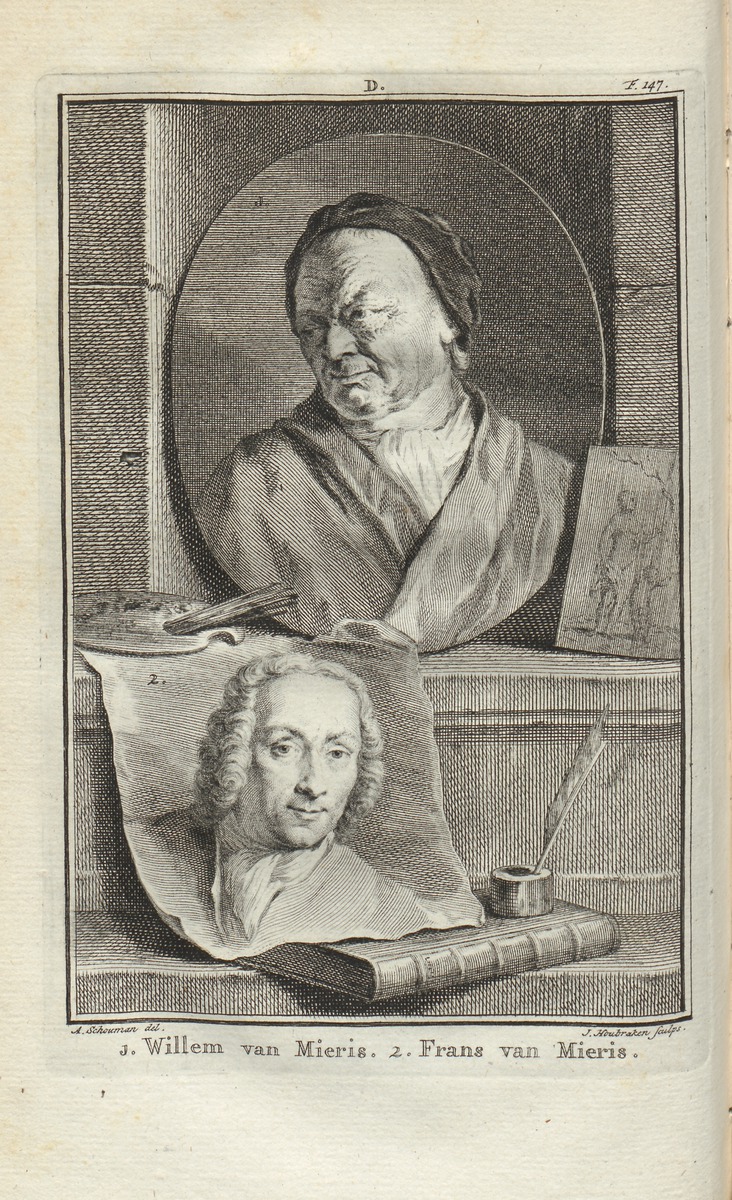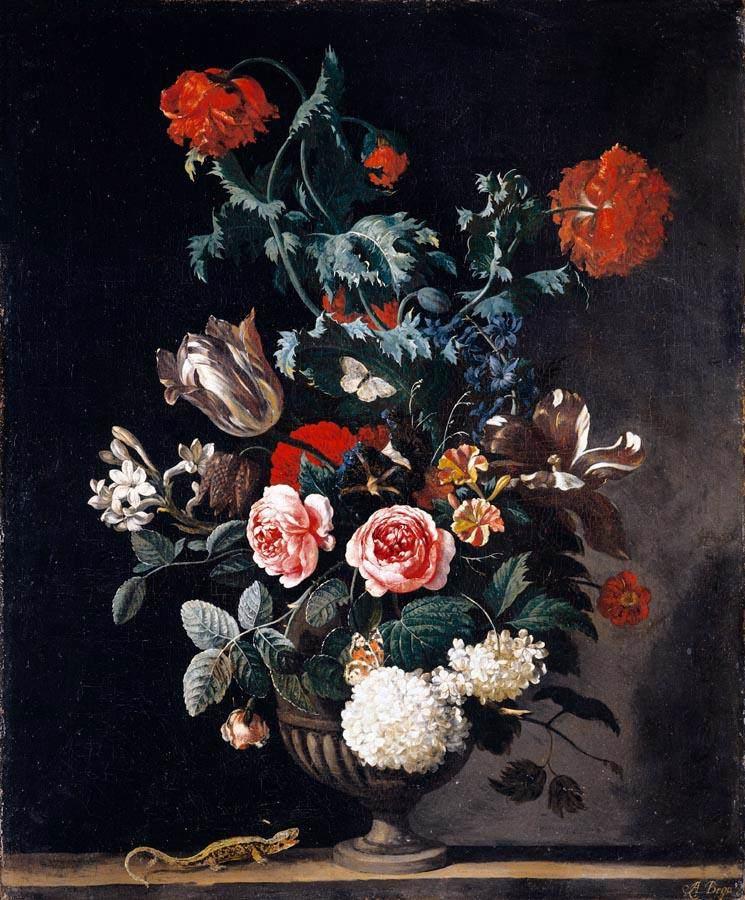|
Leiden Guild Of St. Luke
The Leiden Guild of Saint Luke refers to three artist collectives in Leiden; the ''Leidsche St. Lucas Gilde'' dating from 1648, the newer ''Leidse Tekenacademie'' established in 1694, and the collective known as ''Ars Aemula Naturae'' (art competes with nature) established in 1799. History Like other Dutch cities, Leiden required membership in the guilds in order to sell wares falling under those guilds. In the Middle Ages, Lucas van Leyden had kept a workshop that was more or less seen as a guild. Leiden in the Middle Ages was a small city in the Northern Netherlands, smaller than Gouda or Haarlem. Leiden seems to have not had a specific guild for painters prior to March 10, 1648, when Gerard Dou and Abraham Lambertsz van den Tempel signed a charter and founded the ''Leidse Sint Lucasgilde'' with his colleagues Gabriel Metsu, Jan Steen, Joris van Schooten, David Bailly and Pieter de Ring.See the RKD entries for these artists This collective was for trades connected to the art ind ... [...More Info...] [...Related Items...] OR: [Wikipedia] [Google] [Baidu] |
Guild
A guild ( ) is an association of artisans and merchants who oversee the practice of their craft/trade in a particular area. The earliest types of guild formed as organizations of tradesmen belonging to a professional association. They sometimes depended on grants of letters patent from a monarch or other ruler to enforce the flow of trade to their self-employed members, and to retain ownership of tools and the supply of materials, but were mostly regulated by the city government. A lasting legacy of traditional guilds are the guildhalls constructed and used as guild meeting-places. Guild members found guilty of cheating the public would be fined or banned from the guild. Typically the key "privilege" was that only guild members were allowed to sell their goods or practice their skill within the city. There might be controls on minimum or maximum prices, hours of trading, numbers of apprentices, and many other things. These rules reduced free competition, but sometimes mainta ... [...More Info...] [...Related Items...] OR: [Wikipedia] [Google] [Baidu] |
Willem Van Mieris
Willem van Mieris (3 June 166226 January 1747) was an 18th-century painter from the Northern Netherlands. Biography Willem van Mieris was a painter, sculptor and etcher active in Leiden. He was born in Leiden and studied under his father Frans van Mieris the Elder (1635–1682), who was a successful genre painter. Willem had a reasonably successful career, being supported by a few patrons who commissioned and collected various of his works. His oeuvre consists mostly of genre and portraiture, with some landscape painting, as well as some sculptures. Van Mieris' style was that of the (painters in the "fine manner"), and his genre works, especially later in his career, depicted scenes from upper-class society. At age 19, Van Mieris took over the family workshop after his father died in 1681, aged 45. He had barely finished his training in the family studio and it would take another two years before he entered the Leiden painters' guild in 1685. He set out to uphold his father's ... [...More Info...] [...Related Items...] OR: [Wikipedia] [Google] [Baidu] |
History Of Leiden
Leiden (; in English and archaic Dutch also Leyden) is a city and municipality in the province of South Holland, Netherlands. The municipality of Leiden has a population of 119,713, but the city forms one densely connected agglomeration with its suburbs Oegstgeest, Leiderdorp, Voorschoten and Zoeterwoude with 206,647 inhabitants. The Netherlands Central Bureau of Statistics (CBS) further includes Katwijk in the agglomeration which makes the total population of the Leiden urban agglomeration 270,879, and in the larger Leiden urban area also Teylingen, Noordwijk, and Noordwijkerhout are included with in total 348,868 inhabitants. Leiden is located on the Oude Rijn, at a distance of some from The Hague to its south and some from Amsterdam to its north. The recreational area of the Kaag Lakes (Kagerplassen) lies just to the northeast of Leiden. A university city since 1575, Leiden has been one of Europe's most prominent scientific centres for more than four centuries. Leiden ... [...More Info...] [...Related Items...] OR: [Wikipedia] [Google] [Baidu] |
Guilds In The Netherlands
A guild ( ) is an association of artisans and merchants who oversee the practice of their craft/trade in a particular area. The earliest types of guild formed as organizations of tradesmen belonging to a professional association. They sometimes depended on grants of letters patent from a monarch or other ruler to enforce the flow of trade to their self-employed members, and to retain ownership of tools and the supply of materials, but were mostly regulated by the city government. A lasting legacy of traditional guilds are the guildhalls constructed and used as guild meeting-places. Guild members found guilty of cheating the public would be fined or banned from the guild. Typically the key "privilege" was that only guild members were allowed to sell their goods or practice their skill within the city. There might be controls on minimum or maximum prices, hours of trading, numbers of apprentices, and many other things. These rules reduced free competition, but sometimes maintained ... [...More Info...] [...Related Items...] OR: [Wikipedia] [Google] [Baidu] |
Roelof Jansz Van Vries
Roelof van Vries (1631, Haarlem – 1681-1701, Amsterdam), was a Dutch Golden Age painter. Biography According to the RKD he is known for landscapes in the manner of more famous Haarlem landscapists such as Jacob van Ruisdael, Meindert Hobbema, Jan Wynants and Philips Wouwerman. He mostly signed his works as Rvries.Roelof van Vries in the He is considered the same person as the painter Roelandt van Vries who entered the Guild of St. Luke in 1653. He entered the |
Ary De Vois
Ary de Vois (1632-1635 – July 1680) was a Dutch Golden Age painter. Biography Ary de Vois was born and died in Leiden. He was the son of Alewijn de Vois from Utrecht, who was organist in the Pieterskerk, Leiden, in 1635. Ary became a pupil in Utrecht of Nikolaus Knüpfer, who also taught Jan Steen. Ary then returned to Leiden to study with Abraham van den Tempel, who lived there between 1648 and 1660. De Vois joined the Leiden Guild of St Luke on 16 October 1653, paying dues until 1677. He was dean in 1662-64, headman in 1664-65 and dean again from 1667-68. He married Maria van der Vecht, on 5 February 1656. According to Houbraken his marriage caused a lull in his production, especially when he moved to Warmond where he took up fishing as a hobby. He had to move back to Leiden in order to keep his production levels high. [...More Info...] [...Related Items...] OR: [Wikipedia] [Google] [Baidu] |
Matthijs Naiveu
Matthys or Matthijs Naiveu (16 April 1647 in Leiden – 4 June 1726 in Amsterdam) was a Dutch Golden Age painter. Biography According to Houbraken he was trained in drawing by Abraham Toorenvliet (1620–1692), a glass painter and drawing instructor (and father of Jacob Toorenvliet), and he learned the art of painting from Gerrit Dou. At the time Houbraken was writing he was still alive and painting in Amsterdam, where he worked as the "Hop inspector" for the brewers of Amsterdam. His works were genre pieces; ''merry company'' interiors with people drinking tea or playing cards, but also ''kraamkamertjes'', or visits to newborn baby's. His largest work was a '' seven works of mercy'', which Houbraken found his best work. [Baidu] |
Cornelis Liefrinck
Cornelis Liefrinck (1581–c. 1662) was a Dutch Golden Age landscape painter. Biography According to Houbraken he was born and lived in Leiden and was still painting in 1640, along with his contemporaries Arnout Elsevier, Jan van Goyen, and Egmont Cornelisz Stooter.Cornelis Liefrinck Biography in ''De groote schouburgh der Nederlantsche konstschilders en schilderessen'' (1718) by Arnold Houbraken, courtesy of the Houbraken may have meant [...More Info...] [...Related Items...] OR: [Wikipedia] [Google] [Baidu] |
Evert Collier
Evert Collier (26 January 1642 – few days before 8 September 1708) was a Dutch Golden Age still-life painter known for vanitas and ''trompe-l'œil'' paintings. His first name is sometimes spelled "Edward" or "Edwaert" or "Eduwaert" or "Edwart," and his last name is sometimes spelled "Colyer" or "Kollier". Life Collier was baptized Evert Calier in Breda, North Brabant.Edwaert Collier in the He was trained in , where his earliest paintings show the influence of |
Abraham Begeyn
Abraham Begeyn (c. 1637 Leiden – 11 June 1697 Berlin), was a Dutch Golden Age painter. Biography Begeyn was born in Leiden. Though perhaps known mostly for his ''Italianate'' landscapes and cattle in the manner of Nicolaes Pietersz Berchem, Begyn was a highly skilled painter active in many genres, who traveled widely. According to the RKD, Begeyn's earliest known work is from 1653, though he was first accepted into the Guild of St. Luke in Leiden in 1655. He stopped paying dues in 1667, because he set off for a trip to Italy. He is registered in Rome and Naples from 1659–1660. In the rampjaar or disaster year, of 1672, he is registered in Amsterdam, and after that he lived in London, where he painted at Ham House, Surrey, together with Willem van de Velde the Younger (1633–1707) and Dirck van Bergen (1645–1690). In 1681 he was in the Hague where two years later he became a member of the painters' confraternity 'Pictura'. He moved to Berlin in 1688, where he became Prussi ... [...More Info...] [...Related Items...] OR: [Wikipedia] [Google] [Baidu] |
Martin Zaagmolen
Martin Zaagmolen or Martinus Saeghmolen (buried 1 November 1669) was a Dutch painter. biography Zaagmolen was born in Oldenburg. Houbraken notices him as a painter of history, and describes a picture of the Last Judgment by him, in which were introduced a great number of figures, very poorly drawn and feebly coloured. Saeghmolen operated from 1640 to 1660. He was the master of Jan Luyken, and Michiel van Musscher; so, if he was not a good painter himself, he was a prestigious teacher. For the anatomist Johannes Van Horne, he also created a massive myology atlas. Zaagmolen died in Amsterdam Amsterdam ( , , , lit. ''The Dam on the River Amstel'') is the Capital of the Netherlands, capital and Municipalities of the Netherlands, most populous city of the Netherlands, with The Hague being the seat of government. It has a population .... Notes References * * * Attribution * Further reading * — About the discovery of 253 anatomical drawings by Martinus Saeghmolen. With sci ... [...More Info...] [...Related Items...] OR: [Wikipedia] [Google] [Baidu] |
Rijksmonument
A rijksmonument (, ) is a national heritage site of the Netherlands, listed by the agency Rijksdienst voor het Cultureel Erfgoed (RCE) acting for the Dutch Ministry of Education, Culture and Science. At the end of February 2015, the Netherlands had 61,822 listed national heritage sites, of which approximately 1,500 are listed as archaeological sites. History and criteria Until 2012, a place had to be over 50 years old to be eligible for designation. This criterion expired on 1 January 2012. The current legislation governing the monuments is the ''Monumentenwet van 1988'' ("Monument Law of 1988"). The organization responsible for caring for the monuments, which used to be called ''Monumentenzorg'', was recently renamed, and is now called Rijksdienst voor het Cultureel Erfgoed. In June 2009, the Court of The Hague decided that individual purchasers of buildings that were listed as rijksmonuments would be exempt from paying transfer tax, effective from 1 May 2009. Previously t ... [...More Info...] [...Related Items...] OR: [Wikipedia] [Google] [Baidu] |









